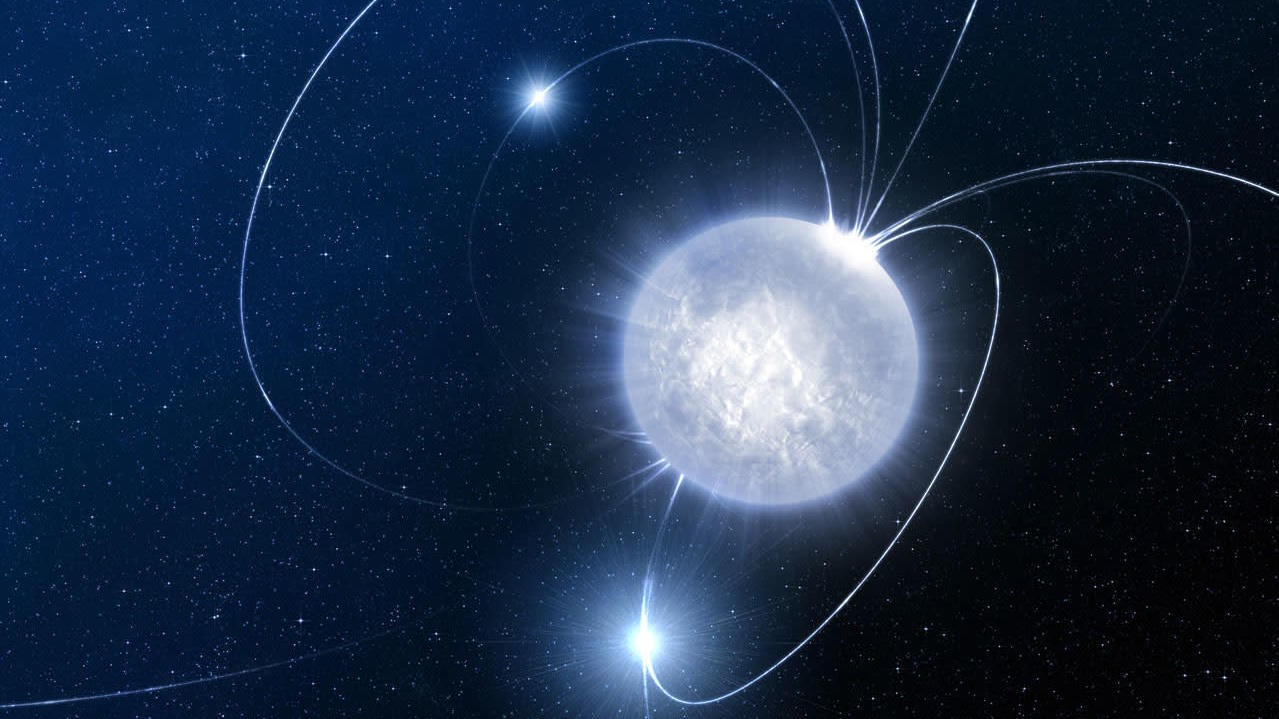Several million years ago, a magnetar spun off its hinges, releasing as much energy as a billion suns in a fraction of a second. Last year, an instrument available on the ISS was able to capture this incredible event. Astronomers believe these high-energy explosions are caused by "starquakes".
A neutron star forms when the core of a massive star collapses at the end of its life under the effect of gravity. As the star dies in a supernova, it ultimately leaves behind only a small object composed almost entirely of neutrons held together. Physically, a neutron star is about 1.3 to 2.5 solar masses (about 330,000 Earths) packed into a sphere measuring only twenty kilometers in diameter.
Magnetars are neutron stars whose magnetic fields are at least a thousand times stronger than those of other neutron stars.
We know that these objects, which can be thousands of times brighter than our Sun, can "flare up" dramatically. Unfortunately for researchers, these eruptions are often very sudden and incredibly brief, and therefore difficult to study . However, difficult does not mean impossible. Recently, a team of astrophysicists indeed recorded one of these events.

The magnetar in question is located in the Sculptor Galaxy, a spiral galaxy found about thirteen million light-years from Earth. The eruption was detected on April 15, 2020 by the Atmosphere-Space Interactions Monitor (ASIM) instrument, available on the International Space Station.
According to analyses, this distant object would have released as much energy as our Sun produces in 100,000 years, and this, in just 0.16 seconds , before "going off" just as suddenly.
"It's as if this magnetar decided to reveal his existence "from his cosmic loneliness" by screaming into the void of space with the force of a billion suns “, emphasizes Alberto J. Castro-Tirado, of the Institute of Astrophysics of Andalusia of the Spanish Council.
In the journal Nature, the authors point out that they spent more than a year analyzing ASIM data, dividing the event into four phases based on the production of energy of the magnetar and variations in its magnetic field.
This new study is important because only about 30 magnetars have been identified out of about 3,000 known neutron stars. In addition, it is the most distant eruption detected to date for such an object. Astrophysicists suspect that these events could be caused by alleged "starquakes" capable of disrupting the highly "elastic" outer layers of magnetars.